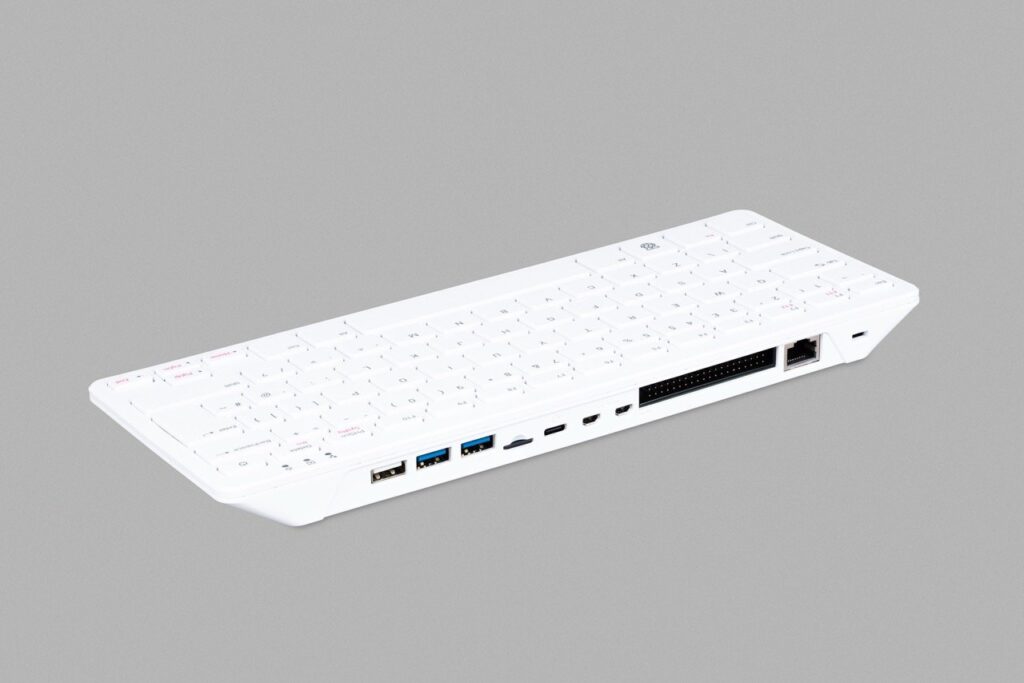
One of the selling points of the Raspberry Pi 5 (released in October 2023) is that it was fast enough and had enough memory to be a credible general-purpose desktop PC, if not an especially fast one. For Pi-as-desktop enthusiasts, the company has a couple of new pre-holiday announcements. The biggest is the Raspberry Pi 500, which fits the components of an 8GB Pi 5 into a small keyboard-shaped case for $90.
It’s a follow-up to the original Raspberry Pi 400, and like that system, it takes the components from the regular Pi 5 board and puts them on a different PCB with all of the ports positioned in a single row across the back of the device. It includes one USB 2.0 port, two USB 3.0 ports, a microSD slot, two micro HDMI ports, the 40-pin GPIO header, and a gigabit Ethernet port.
In addition to the standalone $90 system, the Pi 500 will also be sold as part of a Desktop Kit with a mouse, power supply, HDMI cable, and printed Beginner’s Guide booklet for $120.
Raspberry Pi
From the front, the Pi 500 just looks like a somewhat chunky desktop keyboard.
Raspberry Pi

Raspberry Pi
The Pi 500 has most of the same ports as the Pi 5.
Raspberry Pi

Raspberry Pi
But the PCB, partially visible here, has been redesigned so all the ports are lined up in a single row across the back.
Raspberry Pi
The Pi 500 has most of the same ports as the Pi 5.
Raspberry Pi
But the PCB, partially visible here, has been redesigned so all the ports are lined up in a single row across the back.
Raspberry Pi
If there’s a major downside to the Pi 500 as a desktop PC, it’s that there isn’t an easy way to add an M.2 slot for faster storage since existing M.2 HATs for the regular Pi 5 can’t be connected to a Pi 500. Pi enthusiast and YouTuber Jeff Geerling’s teardown of the device reveals that there’s space on the Pi 500 board that seems to be specifically set aside for an M.2 slot and NVMe SSDs, but the slot isn’t populated, and simply soldering one down isn’t enough to enable M.2 support. It may come in a later and/or more expensive version of the Pi 500. Out of the box, you’ll be limited to microSD media or storage connected to one of the USB ports.